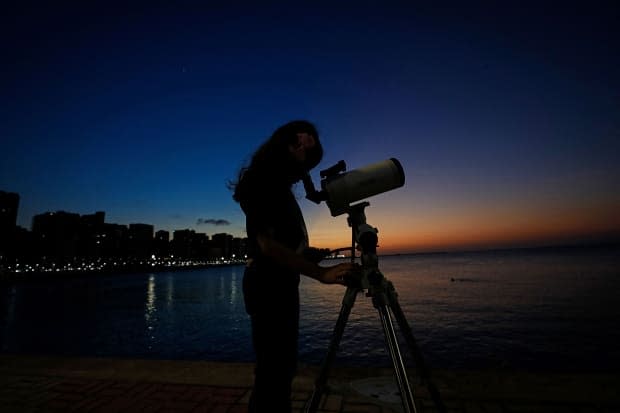Grab your binoculars! N.B. astronomers say comet not seen for 50,000 years is on its way

Curt Nason, an amateur astronomer and comet enthusiast, went outside looking for the C/2022 E3 comet about two months ago.
While looking through the lens of his telescope, he locked in on the spot where the comet should be. He saw a "little fuzzy patch."
"That made me smile," Nason said.
That comet is expected to be seen in the Northern Hemisphere this month. It will be closest to Earth on Feb. 1.
Nason said it is possible the comet could be seen with the naked eye. But because comets aren't pinpoints of light, a telescope or binoculars might be required for viewing, he said.

When he saw the comet, even with his telescope and a dark sky, it only appeared as a blur.
Nason, who is involved with the Saint John Astronomy Club and the New Brunswick centre for the Royal Astronomical Society of Canada, said he has seen 93 comets in his lifetime, but it hasn't been easy.
"They're quite a challenge to see, a lot of them," he said
"When you think of comets, you're thinking of the bright thing in the sky with a long beautiful tail on it. But very few of them look like that. Maybe once a decade, we might get one that actually looks like that."
Instead, Nason said most comets are too faint for the naked eye and even too faint for binoculars.
But that's what keeps Nason coming back to look for them. Tracking down comets is part of the challenge and part of the fun for him.
He said there are different things in the sky to look for like nebulas and star clusters. But, unlike comets, they are always there, he said.
Chris Curwin, another member of the Saint John Astronomy Club and the Royal Astronomical Society, said comets are unpredictable and it's hard to know what's going to happen with them until they pass around the sun.

Curwin said the C/2022 E3 hasn't been seen for about 50,000 years. He said it will be closest to the sun on Jan. 12.
Something interesting about this comet, said Curwin, is it's going to be circumpolar, which means it won't set.
Amateur astronomers won't have to pick a particular time to see the comet, he said, since it will be up all night long in the constellation Corona Borealis.
Comet will glow
Curwin said the comet will have a glow around it from material being ejected.
He said he will watch over the next week to see how the comet is going to appear for viewers. He said the comet isn't producing a long tail yet, but it could once it comes around the sun.
If New Brunswickers are interested in looking for the comet, he said they might want binoculars that would make it appear brighter.
He said they would also want to find a really dark sky where there is no light pollution.
"We have a few parks in our province that are quite like that," said Curwin. "We're very lucky in New Brunswick to have that many dark skies."


